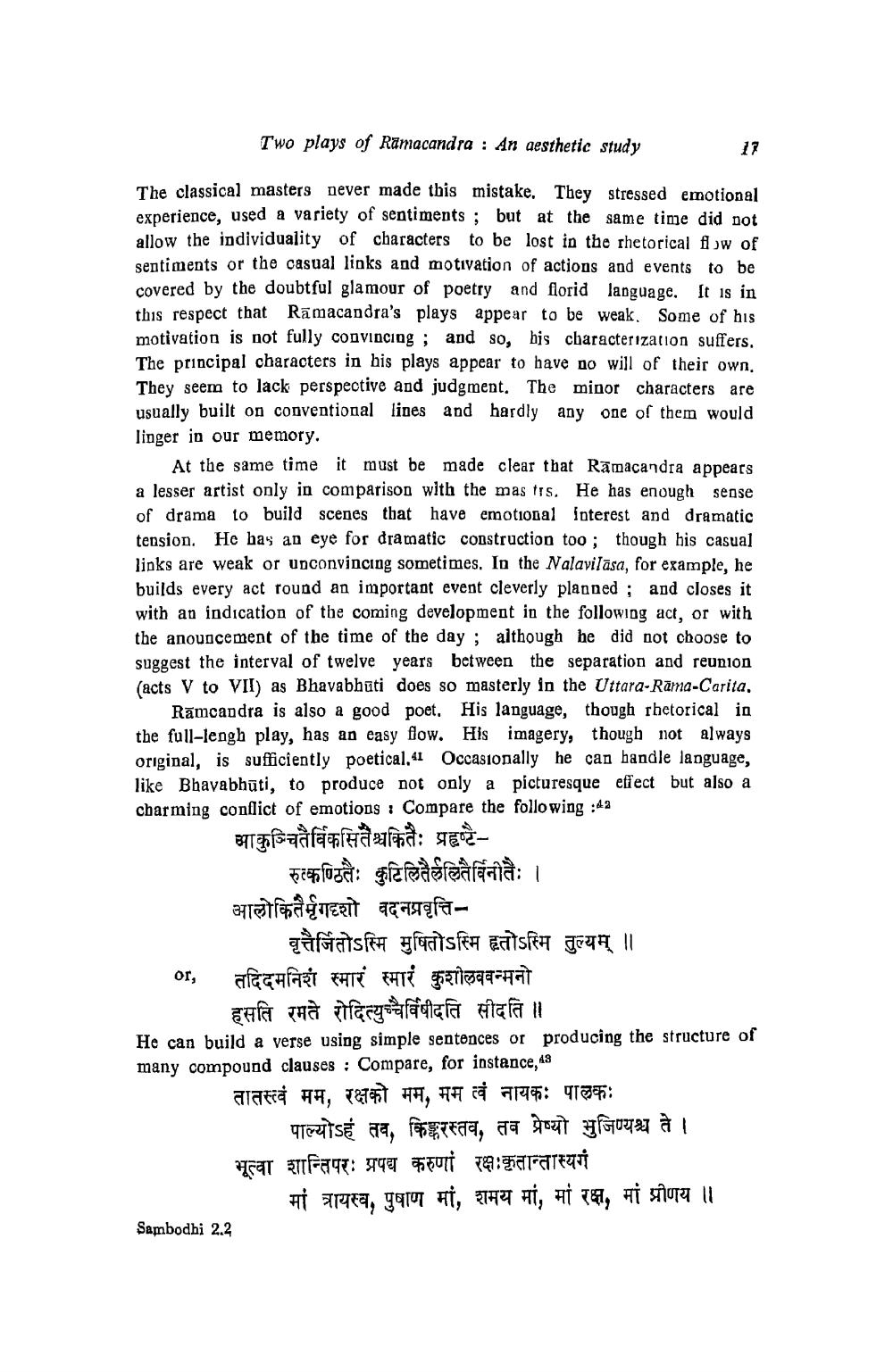________________
T'wo plays of Ramacandra : An aesthetic study
The classical masters never made this mistake. They stressed emotional experience, used a variety of sentiments ; but at the same time did not allow the individuality of characters to be lost in the rhetorical flow of sentiments or the casual links and motivation of actions and events to be covered by the doubtful glamour of poetry and florid language. It is in this respect that Ramacandra's plays appear to be weak. Some of his motivation is not fully convincing ; and so, bis characterization suffers. The principal characters in his plays appear to have no will of their own. They seem to lack perspective and judgment. The minor characters are usually built on conventional lines and hardly any one of them would linger in our memory.
At the same time it must be made clear that Ramacandra appears a lesser artist only in comparison with the mastis. He has enough sease of drama to build scenes that have emotional interest and dramatic tension. He has an eye for dramatic construction too; though his casual links are weak or unconvincing sometimes. In the Nalavilasa, for example, he builds every act round an important event cleverly planned ; and closes it with an indication of the coming development in the following act, or with the anouncement of the time of the day ; although he did not choose to suggest the interval of twelve years between the separation and reunion (acts V to VII) as Bhavabhuti does so masterly in the Uttara-Rama-Carita,
Rāmcandra is also a good poet. His language, though rhetorical in the full-lengh play, has an easy flow. His imagery, though not always original, is sufficiently poetical.4l Occasionally he can handle language, like Bhavabhūti, to produce not only a picturesque effect but also a charming conflict of emotions : Compare the following : 42
आकुञ्चितैर्विकसितैश्चकितैः प्रहृष्टै
रुत्कण्ठितैः कुटिलितैललितैर्विनीतैः । आलोकितैर्मुगदृशो वदनप्रवृत्ति
वृत्तैर्जितोऽस्मि मुषितोऽस्मि हृतोऽस्मि तुल्यम् ॥ or, तदिदमनिशं स्मारं स्मारं कुशोलववन्मनो
___ हसति रमते रोदित्युच्चैर्विषीदति सीदति ॥ He can build a verse using simple sentences or producing the structure of many compound clauses : Compare, for instance,AB
तातस्त्वं मम, रक्षको मम, मम त्वं नायकः पालकः
पाल्योऽहं तव, किङ्करस्तव, तव प्रेष्यो भुजिण्यश्च ते । भूत्वा शान्तिपरः प्रपद्य करुणां रक्षाकृतान्तास्यगं
___ मां त्रायस्व, पुषाण मां, शमय मां, मां रक्ष, मां प्रीणय ॥ Sambodhi 2.2




